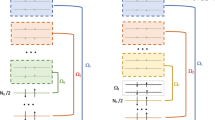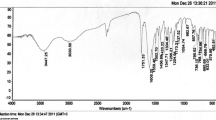Abstract
The reaction mechanism underlying the hypergolic reaction of pure monomethylhydrazine (MMH) with 1-chloro-1,1-dinitro-2-(N-chloroamidino)ethane (CDNCE) was theoretically investigated with the density functional theory method. We identified two key atomistic level factors that affect ignition delay: (1) exothermicity for the formation of aerosol mCDNCE·nMMH complexes (m, n = 1, 2). The most cost-effective form was found to be 2CDNCE·MMH with the highest energy release (releasing energy: 23.4 kcal/mol), indicating that the oxidizer-rich form is favorable. These complexes contributed the most to heat gathering and temperature increases in the system at the beginning of all reactions. (2) For the initial reaction of MMH with CDNCE, the SN2 mechanism was preferred. The activation barrier of the primary reactions was calculated to be 27.4 kcal/mol, which is also the rate-limiting step of this path. Because the rate of formation of NO2 was four orders of magnitude lower than the SN2 reaction at room temperature, the effect of MMH with NO2 was less significant at temperatures below 800 K. Thus, we consider the ignition reaction of MMH with CDNCE to be well characterized.







Similar content being viewed by others
References
Herve G, Jacob G, Latypov N (2005) Tetrahedron 61(28):6743–6748
Klaptke TM (2007) Struct Bond 125:85–121
Bladek J, Pietrzyk S, Cudzilo S, Chylek Z (2009) Propellants Explos Pyrotech 34(4):321–325
Gao HX, Shreeve JM (2011) Chem Rev 111(11):7377–7436
Dippold AA, Klapotke TM (2013) J Am Chem Soc 135(26):9931–9938
Izsak D, Klapotke TM, Reuter S (2013) Eur J Inorg Chem 2013(32):5641–5651
Cheng Z, Yan-shui Z, Huan H, Fu-qiang B, Bo-zhou W, Ya-nan M (2011) Chin J Energy Mater 19(3):243–246
Zhou C, Zhou YS, Ma YN, Huo H, Bi FQ, Li WJ (2011) Chin J Spectrosc Lab 28(2):818–821
Vo TT, Zhang JH, Parrish DA, Twamley B, Shreeve JM (2013) J Am Chem Soc 135(32):11787–11790
Liu WG, Wang SQ, Dasgupta S, Thynell ST, Goddard WA, Zybin S, Yetter RA (2013) Combust Flame 160(5):970–981
McQuaid MJ, Ishikawa Y (2006) J Phys Chem A 110(18):6129–6138
Osmont A, Catoire L, Klapotke TM, Vaghjiani GL, Swihart MT (2008) Propellants Explos Pyrotech 33(3):209–212
Pichon S, Catoire L, Chaumeix N, Paillard C (2005) J Propuls Power 21(6):1057–1061
Frisch MJ, Trucks GW, Schlegel HB, Scuseria GE, Robb MA, Cheeseman JR, Scalmani G, Barone V, Mennucci B, Petersson GA, Nakatsuji H, Caricato M, Li X, Hratchian HP, Izmaylov AF, Bloino J, Zheng G, Sonnenberg JL, Hada M, Ehara M, Toyota K, Fukuda R, Hasegawa J, Ishida M, Nakajima T, Honda Y, Kitao O, Nakai H, Vreven T, Montgomery JA Jr, Peralta JE, Ogliaro F, Bearpark MJ, Heyd J, Brothers EN, Kudin KN, Staroverov VN, Kobayashi R, Normand J, Raghavachari K, Rendell AP, Burant JC, Iyengar SS, Tomasi J, Cossi M, Rega N, Millam NJ, Klene M, Knox JE, Cross JB, Bakken V, Adamo C, Jaramillo J, Gomperts R, Stratmann RE, Yazyev O, Austin AJ, Cammi R, Pomelli C, Ochterski JW, Martin RL, Morokuma K, Zakrzewski VG, Voth GA, Salvador P, Dannenberg JJ, Dapprich S, Daniels AD, Farkas Ö, Foresman JB, Ortiz JV, Cioslowski J, Fox DJ (2009) Gaussian 09, revision D.01. Gaussian Inc, Wallingford
Neese F (2012) Wires Comput Mol Sci 2(1):73–78
Zhao Y, Truhlar DG (2008) Theor Chem Acc 120(1–3):215–241
Goerigk L, Grimme S (2011) J Chem Theory Comput 7(2):291–309
Grimme S, Antony J, Ehrlich S, Krieg H (2010) J Chem Phys 132(15):154104. doi:10.1063/1.3382344
Grimme S, Ehrlich S, Goerigk L (2011) J Comput Chem 32(7):1456–1465
Weigend F, Ahlrichs R (2005) Phys Chem Chem Phys 7(18):3297–3305
Lu T, Chen FW (2012) J Comput Chem 33(5):580–592
Humphrey W, Dalke A, Schulten K (1996) J Mol Graph 14(1):33–38
Kuklja MM, Rashkeev SN, Zerilli FJ (2006) Appl Phys Lett 89(7):071904. doi:10.1063/1.2335680
Murray JS, Concha MC, Politzer P (2009) Mol Phys 107(1):89–97
Zhu RS, Raghunath P, Lin MC (2013) J Phys Chem A 117(32):7308–7313
Yu ZJ, Bernstein ER (2013) J Phys Chem A 117(42):10889–10902
Mathieu D (2013) J Phys Chem A 117(10):2253–2259
Lesar A (2013) Chem Phys Lett 579:28–34
Booth RS, Lam CS, Butler LJ (2013) J Phys Chem Lett 4(3):547–550
Zhang CY, Wang XL, Zhou MF (2011) J Comput Chem 32(8):1760–1768
Tan BS, Long XP, Peng RF, Li HB, Jin B, Chu SJ (2011) J Phys Chem A 115(38):10610–10616
Li JS (2010) J Phys Chem B 114(6):2198–2202
Zhang CY, Shu YJ, Huang YG, Zhao XD, Dong HS (2005) J Phys Chem B 109(18):8978–8982
Acknowledgements
The authors thank the National Natural Science Foundation of China (Nos. 21573090, 21303067, 21373099, 21403086), Scientific Research Fund of Jilin Provincial Education Department (2015437), and Science and technology research project of Jilin Provincial Department of Education in 12th Five-Year Plan (No. 388[2011]) for financial support of this research.
Author information
Authors and Affiliations
Corresponding authors
Electronic supplementary material
Below is the link to the electronic supplementary material.
Rights and permissions
About this article
Cite this article
Feng, W., Liu, H., Huang, X. et al. Theoretical investigation on the interaction of hypergolic monomethylhydrazine with 1-chloro-1,1-dinitro-2-(N-chloroamidino)ethane using DFT methods. Theor Chem Acc 136, 120 (2017). https://doi.org/10.1007/s00214-017-2139-2
Received:
Accepted:
Published:
DOI: https://doi.org/10.1007/s00214-017-2139-2




